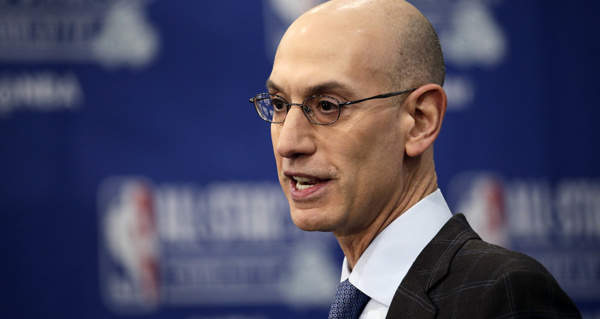The news has come too quickly to be made sense of. Every hour seems to bring another story about a player or group of players who are newly unavailable due to testing positive for COVID-19. It’s practically impossible to keep track of who will and will not be playing in any given contest; starting line-ups look like squads that a tanking team would assemble for an early April contest. Five games were postponed on Sunday and more are sure to follow in the coming days. There are few compelling reasons for anyone to watch the games that are still ongoing. Yes, they will count in the final records and will therefore affect playoff seeding, but individually, each feels entirely meaningless, a sign with no signifier.
In March 2020, one positive test from Rudy Gobert was enough to suspend the season. A year and a half later, it does not appear that there is any number that could prompt the league to take a hiatus. This was a time when the prospect of a million people dying from COVID-19 would have been greeted with universal horror instead of resignation. This was a time when shock and fear outweighed fatigue. We inhabit a different time now. The situation is essentially the same – better in some ways, worse in others – but the desire to alleviate suffering or prevent potential pain and loss has largely evaporated.
As the virus has worked its way through the NBA, Adam Silver has been silent. His thoughts, aims, and goals have not been communicated to fans. Perhaps he can imagine the inevitable backlash and has decided that saying nothing is the more prudent choice. At least this way he is not forced to lie. It’s a disappointing, if predictable turn for Silver who seems to have remembered that his primary responsibility as commissioner is to keep the league’s owners happy. Now, if there are solid, concrete policies in place, it is not clear what they are. The decision-making process seems arbitrary, like the league is just trying to plug leaks and bail out water as quickly as possible to keep the ship from sinking and get to Christmas in as good of shape as possible.
Christmas has long been the NBA’s special day. It’s the unofficial start of the season for many, the day when the league’s marquee stars and match-ups are showcased to a national audience in five back-to-back games. Last year, the NBA was sure to return in time for Christmas even though it likely would have been more prudent to wait until January and this season, the reluctance to take a break in the season is likely due to the fact that Christmas is so near. If the NBA is going to stop play for a few weeks, it won’t be until Christmas, and their marquee day, has passed. Perhaps then, with their biggest regular season day over, the league will take a step back and reassess the feasibility of taking a break until this current wave crests – though it seems foolish to expect that.
In the meantime, the NBA is trying to pretend the problem does not exist. They will continue to put players in health and safety protocols as if the absence of multiple players every game is a sign of the system working rather than a manifestation of its complete breakdown. League owners are desperate to avoid postponements or cancellations and so the league has shown a preference for staging lackluster games, with shortened rosters and replacement players, over a stoppage in play. On Sunday, it was reported that the NBA is requiring teams to sign replacement players when they have two or more positive tests on the roster. This will keep the games on, but it’s functionally just buying time, kicking the can down the road, while putting more players at risk in the process.
Viewership and fan interest are sure to decrease, but for owners, a relative drop in earnings is preferable than an absolute one. In March 2020, despite a lack of information, the NBA made the right move by shutting down play. Now, there is infinitely more knowledge available than there was then and also an effective vaccine, but such knowledge is worthless if the commissioner and the owners lack the desire to follow through on what it demands.
One will hear people talk about life in a post-COVID world even as cases rise to all-time high levels as if a combination of desire and exhaustion are enough to overcome the reality of the situation. And in such a situation, the NBA can continue to adjust and tinker so that games may continue and contracts are honored and money will continue to come in. The NBA is not a public health organization and is therefore not in a position to solve the problems facing it. However, instead of doing what they can to at least keep its players, coaches, employees, and fans safe, they are moving forward, trying to work around the pandemic. It’s a needle they threaded once before by retreating to Orlando. That previous resolve is gone.
The pieties uttered by leaders are easily dispensed with the second they become unprofitable. Adam Silver may have looked like a conscientious leader a year and a half ago, but it could not last. Eventually, the games would resume and the bubble would burst and player safety would take a backseat to returning to a false sense of normalcy. The predictability of the situation neither makes it right or easier to accept. When speaking about the potential return of the NBA in April 2020, Silver said it was contingent not on a particular date, but on “the data.” Clearly, that is no longer the case.



